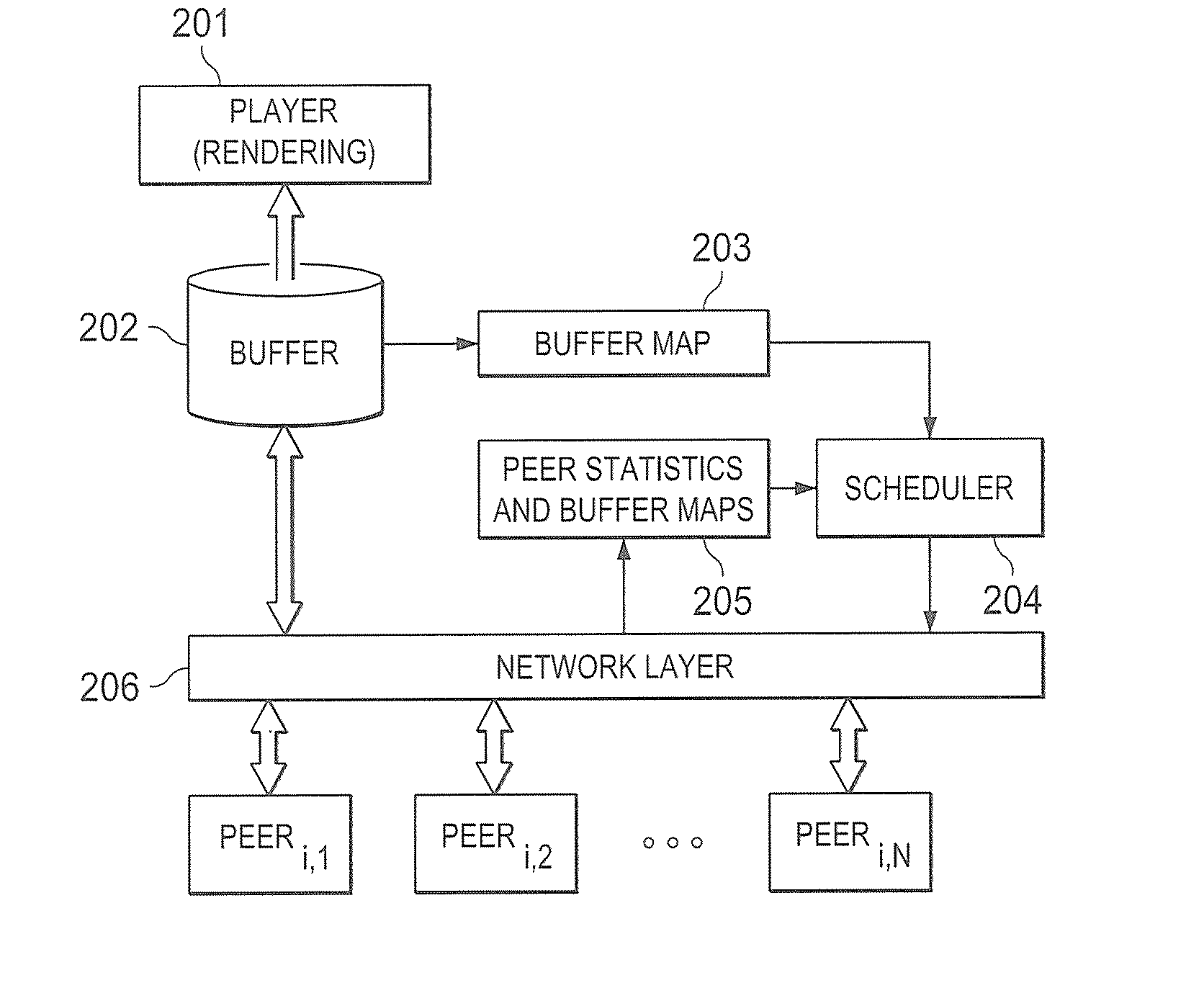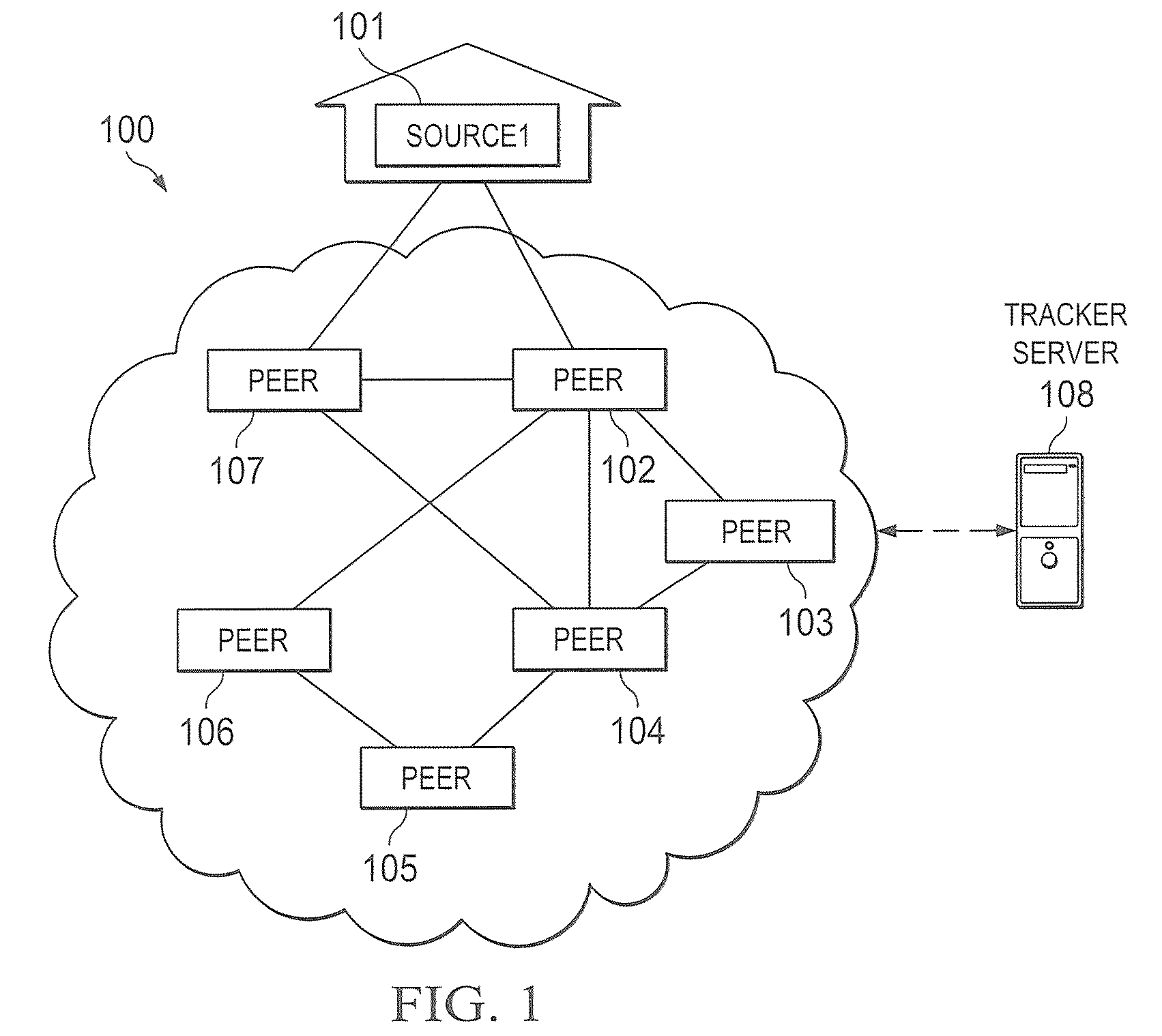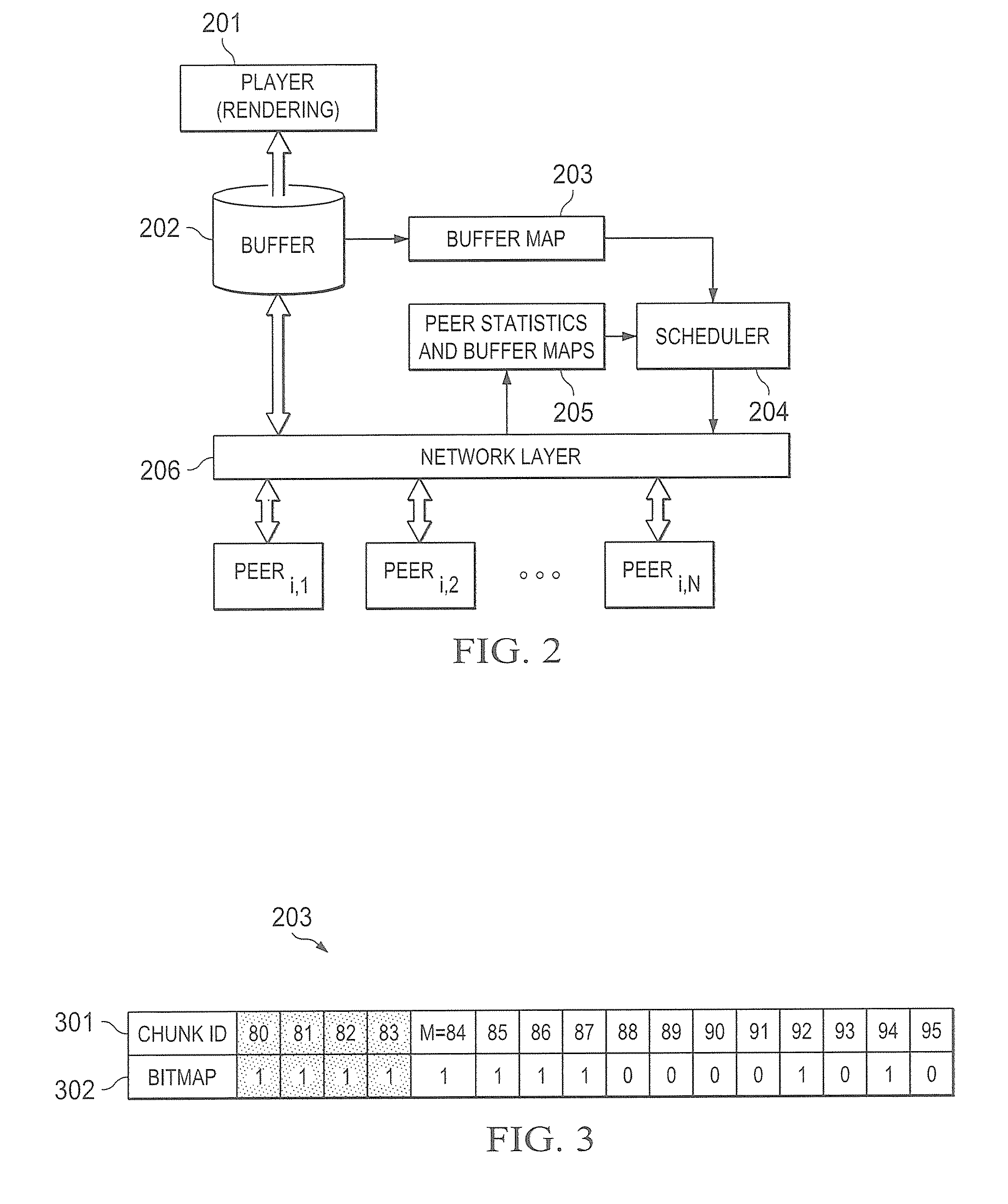Method of data request scheduling in peer-to-peer sharing networks
a peer-to-peer sharing network and data request technology, applied in the field of peer-to-peer sharing network and data request scheduling methods in p2p networks, to achieve the effects of increasing global contribution, enhancing playback smoothness, and increasing the contribution of a peer
- Summary
- Abstract
- Description
- Claims
- Application Information
AI Technical Summary
Benefits of technology
Problems solved by technology
Method used
Image
Examples
Embodiment Construction
[0038]FIG. 1 shows a block diagram of an exemplary P2P network 100 according to one embodiment of the present invention. Exemplary P2P network 100 includes a source peer (SP) 101 and various receiving peers (RPs) 102-107. Each peer 101-107 may be a personal computer (PC), laptop computer, personal data assistant (PDA), mobile telephone, or other processor-based computing device that is communicatively coupled to one or more neighboring peers via the P2P network 100.
[0039]SP 101 encodes / creates the stream of content in this example. That is, in certain embodiments, SP 101 comprises a live encoder to create the live media stream in the P2P network 100. RPs 102-107 desire to receive the stream of content. Each peer (SP / RP) has its own set of neighbors. Not every peer is required to have SP 101 in its neighbor list. So, SP 101 may send live streaming content onto the network 100, and different RPs 102-107 may desire to receive the streaming content. Rather than each of the RPs 102-107 b...
PUM
 Login to View More
Login to View More Abstract
Description
Claims
Application Information
 Login to View More
Login to View More - R&D
- Intellectual Property
- Life Sciences
- Materials
- Tech Scout
- Unparalleled Data Quality
- Higher Quality Content
- 60% Fewer Hallucinations
Browse by: Latest US Patents, China's latest patents, Technical Efficacy Thesaurus, Application Domain, Technology Topic, Popular Technical Reports.
© 2025 PatSnap. All rights reserved.Legal|Privacy policy|Modern Slavery Act Transparency Statement|Sitemap|About US| Contact US: help@patsnap.com



